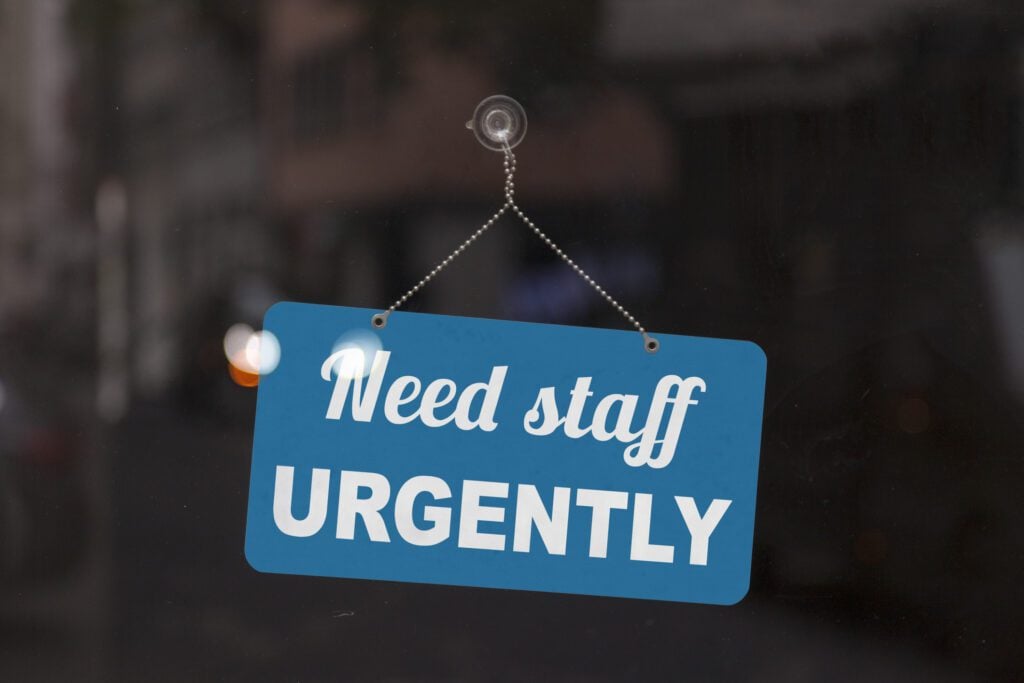The great resignation in Australia was a pivotal and unforeseen period in time which completely changed the work dynamic between employers and employees. The great resignation began in the United States, where approximately 4.5 million workers quit their job during November.
And before we knew it, the trend made its way to Australia and up to 1.3 million workers quit their job during 2021. But what caused the great resignation in Australia? What impact did it have on the job market and is it still around?
Causes of the great resignation in Australia
We all agree that the Covid-19 pandemic sparked a lot of changes across the entire globe. Everyone’s attitude towards freedom and basic human interaction completely changed – especially towards work life balance.
The world learnt about hybrid working effectiveness and Australian employers were willing to provide remote work conditions to remain operational during a challenging period. Many employees ended up suffering burnout and working lives were mostly affected in a negative manner.
The impact of the pandemic on employees
Like the rest of the globe, many Australian employees across all industries faced job loss due to restrictions and lockdowns. This dilemma created a lot of job insecurity and Australian workers that were once confident in their job roles, were now uncertain if they could keep their positions. The uncertainty sparked Australian workers to reassess their career paths and find jobs which offered greater security.
The number of people that experienced isolation, burnout and job dissatisfaction drastically increased as the rules of the pandemic imposed many restrictions. While working from home was initially enjoyed by most, overtime some people realised they don’t like their occupation and only come for the human interaction.
And that’s what brought the rise in remote working, flexible working and focusing on our own health. Of course, this had a consequence on the logistics side of business and caused a lot of delays for everyone – but that ship has now sailed.
Work-life balance issues & mental health
The great resignation was also the impetus behind Australian employees seeking greater flexibility. Many Australians were feeling overwhelmed and felt increasing pressure to manage multiple roles, such as long work hours while caring for children and managing chores.
Combine those pressures with the already mental health taxing pandemic, and people were more than ready to prioritise their own wellbeing over work – resulting in significant resignations. Although the great resignation isn’t an issue anymore in Australia, there have been long lasting effects such as the desire for remote working and flexible hours remaining strong.
Lack of job satisfaction amongst Australian workers
The Australian workforce’s decision of prioritising mental health was almost in solidarity to searching for greater job satisfaction. During 2021, there was a 26% increase in Australian workers moving from one company to another and it was all because people weren’t happy.
The Australian population was reflecting on their career and lifestyle options when the pandemic began, and even after restrictions were gone this change persisted. The market stability of jobs was not in the best position because workers were only considering jobs which ticked all of their boxes.
This meant companies needed to develop a strong employee value proposition, with one of the major factors being more flexibility. Whether that came in the form of hybrid or complete remote working was split between employees, but businesses which didn’t offer either had fewer opportunities regarding hiring.
Flexibility in jobs has now become an expectation rather than a privilege and roles which can’t provide it aren’t considered a good position by workers. Interestingly enough, awarding flexibility makes Australian workers feel trusted in their role whilst also tackling talent shortage during a particularly challenging period.
Remote working conditions were able to reassure employers that access to quality talent isn’t restricted through location and it also addressed the rising cost of needing office space – in some aspects it was a win-win for both parties.
Negative after-effects seen in the past year
But there are downsides.
While workers may have found flexibility and re-evaluated their career paths, many reports suggest that people regret changing their jobs. In fact, up to 80% of people regret quitting their jobs during the great resignation.
This tells us two things. People were unable to find another job which provided flexibility or workers realised their previous job wasn’t that bad! Workers who changed jobs were then almost straight away searching for an escape method or putting pressure on their current employer to offer remote working.
Another negative effect from the great resignation in Australia was the reduced motivation people experienced after they regret quitting their jobs. If the pandemic wasn’t already bad enough in developing the burnout syndrome, then regret of quitting a job only accelerated it.
Now, we’re seeing a the great resignation evolve into quiet quitting and loud quitting, which are both concerning trends.
Industry & company consequences
The biggest impact the great resignation brought upon businesses was a struggle in maintaining a healthy number of staff and retaining top talent. And this complication persisted globally, with 60% of US businesses struggling to find talent to fill open roles and one-third of Australian businesses unable to do the same.
While companies had plenty of open roles, they simply weren’t being filled and it resulted in freelance workers temporarily occupying more positions. The industries most affected by the great resignation was the hospitality sector, supply chain and logistics, along with call centers and delivery services.
Interestingly, according to the Australian Bureau of Statistics it was large and medium sized businesses which found it the hardest to attract or sustain staff retention. Whilst employers of smaller businesses still faced challenges with staff retention, overall they had a better time filling in positions.
And to no surprise the main factor preventing employers from hiring was a lack of job applicants. With 79% of businesses not having enough applicants and 59% of applicants not having relevant experience or qualifications, the average managers were mostly directionless.
Employers solutions for the great resignation in Australia
Upskilling employees, offering flexible work conditions and promoting have been the most universally applied solutions by managers.
Because of the increased instances of workers experiencing burnout, employers understand that upskilling their team gives them new challenges to tackle. Upskilling has given workers greater opportunities and the right skills to further their career. Not only does this develop a better employee value proposition but it’s also an indication to employees that their managers care.
Upskilling and promoting employees is a tactic which went hand in hand as a solution. Managers would train their team with new skills and assign new roles after they gain confidence with their newfound skills. From the manager’s perspective, this made the avenue to promotion more streamlined, as they could base it off newly acquired skill performance.
Flexible working conditions in the form of remote or hybrid settings caused a marginal shift in more jobs being filled. After most individuals experienced improved work life balance and mental health benefits, most weren’t ready to settle for anything else. Having control over the work environment became a top priority for the average worker and some were happy to work longer hours when awarded with flexibility.
Is the great resignation still an issue?
The great resignation was still a battle to be won during mid to late 2022, but has since settled and stabilised. The number of career changes, quitting jobs, struggling to hire and the trickle down effect it had on every industry were strenuous times.
But now job security is better than before and workers are priortising longevity due to inflation. Rising costs have put a strain on everyone and most wouldn’t consider leaving their jobs unless a better opportunity is present.
For now, it’s safe to say that the great resignation in Australia is over.










